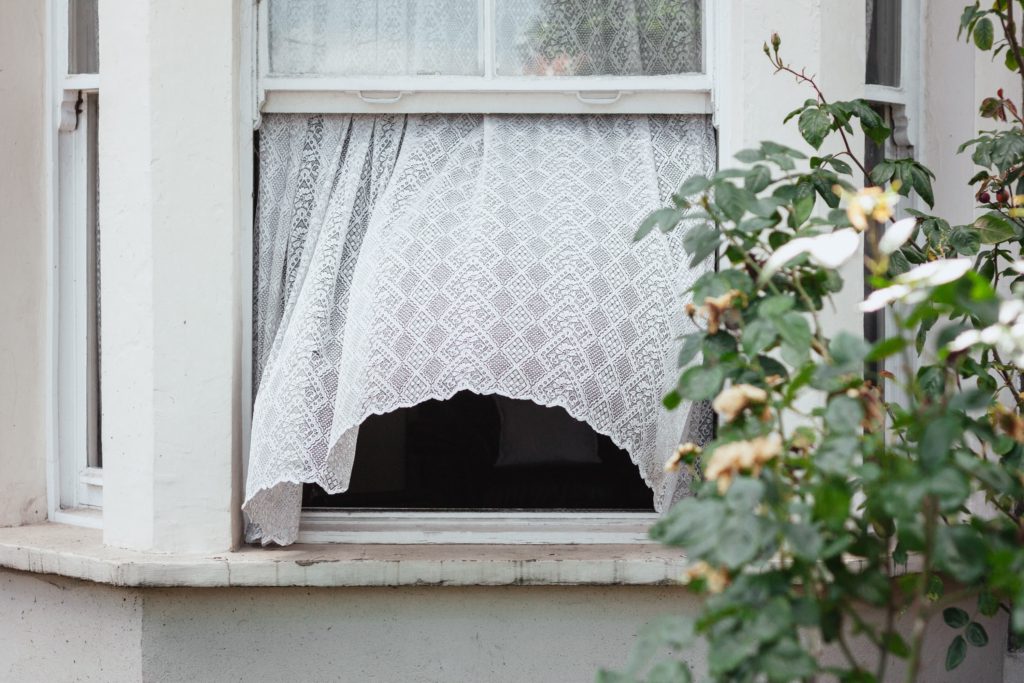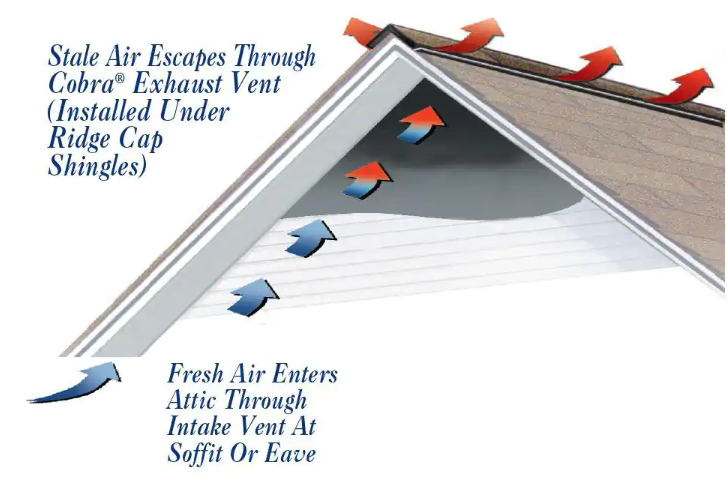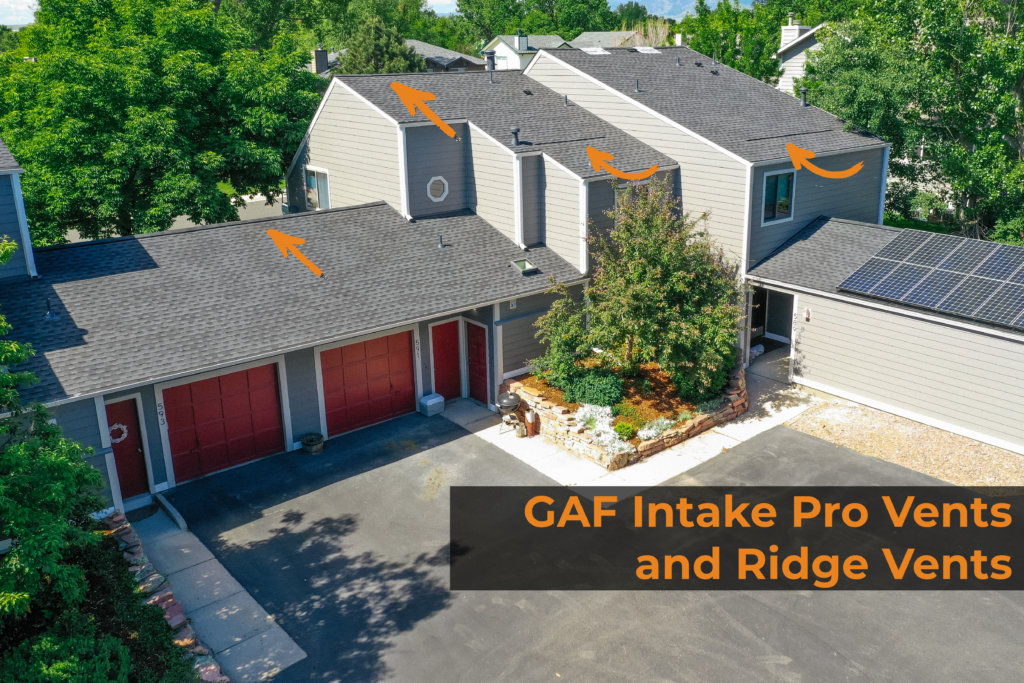In Colorado we are lucky to live somewhere we can enjoy all four seasons. As homeowners, this means our homes must stand up to many climates. They need to be built to keep cold out in the winter, heat out in the summer, and they need to mitigate moisture year round. As we head into summer, the question is, can your home stand up to the heat?
When dealing with the Colorado heat, many homeowners may not consider the impact their roof will have on keeping temperatures comfortable inside their homes. In fact, your roof can stand up to the Colorado climate while actively contributing to the comfort of your home. The key is effective roof ventilation. In addition to keeping your home cooler in the summer, effective roof ventilation can potentially reduce energy usage, extend the life of your roof, and mitigate moisture that can damage your home, and even contribute to mold growth.
Roof Ventilation and the Cross Breeze

This is what effective roof ventilation can do for your attic. Proper roof ventilation isn’t rocket science. In fact, it uses the same basic principles as the “cross breeze” concept described above. As the attic cools down, it draws heat and moisture out of the attic, contributing to a more comfortable, safe, and energy efficient home.
Your Roof Can Work With the Colorado Heat
On a Colorado summer day, the hot sun beats down on a shingle roof, increasing the temperature of the attic. This can lead to attic temperatures in excess of 140 degrees Fahrenheit. Proper roof ventilation, with a balanced intake and exhaust, uses the heating attic to its advantage. As the day gets hotter, the ventilation system works harder, drawing cool, fresh air through the intake, and expelling the hot air out of the exhaust. The result is an attic as close to the outside temperature as possible.
This is how proper roof ventilation will benefit any Colorado home in summer. Effective ventilation can create a cross breeze bringing cool air in through the base of the roof, through the attic or crawl space, and out the top of the roof. Many roofs, however, are built without a system to create a cross breeze. It is similar to just one window being open in the kitchen. These roofs either only have vents towards the eave of the roof (soffit vents) or or just a few near the top (ridge)– but not both. This results in an ineffective, unbalanced ventilation system. Many times, roofs may have some of each component but not enough. Utilizing both components effectively can provide better opportunities for air to flow through the roof, just like creating a cross breeze in the home.

Effective Roof Ventilation Can Provide Multiple Benefits
While naturally cooling your home, roof ventilation can:
- Reduce energy usage
- Extend the life of a roof
- Mitigate moisture build up
Reduce Energy Usage

When hot air builds up inside the home it can get trapped below the roof. At the same time, the sun can heat up the roof throughout the day. Together they can create trapped heat at over 140 degree temperatures. This can make a home very difficult to cool down, increasing the need and usage of air conditioning and, in turn, using much more energy. With an effectively vented roof the hot air can be pushed out, reducing the need for air conditioning to fight against the trapped heat.
Extend the Life of Your Roof
Additionally, without effective ventilation, shingles on the roof might then be baked both from trapped heat below and from the sun above. Generally shingles are not made to withstand the kind of heat that can build up below an ineffectively vented roof. This could cause the shingles to crack and blister more than normal weathering, taking a thirty year roof and making it last less than ten. Providing a place for the hot air to go, provides an environment where shingles may be able to thrive, an environment in which they can do their job as intended.
Keep Moisture Out of Your Home
Humidity and moisture from the home may also build up below a roof. Ventilation toward the bottom of the roof can bring in dry cool air that is then pushed through the home and up through the top of the roof. With effective ventilation, warm humid air has a place to go, pushed out by the incoming cool dry air. This can mitigate moisture build up and even mold growth below the roof or in the attic.
Boulder Roofing Codes Require Effective Ventilation
Many cities even require effective cross ventilation as part of their building codes. In fact, Boulder County’s roofing code requires ventilation systems in any construction, alteration, or repair of every building or structure to be “a balanced system that provides both outside air intake and stale air exhaust.” To be up to code, a home may need updated and effective systems to create cross ventilation in the attic or crawl space below the roof.
Effective Roof Ventilation Can Take Many Forms
Generally homes already have some kind of ventilation system built into their roof and exterior. Many homes will have soffit vents and/or exhaust vents but they may either be ineffective or there are simply not enough of them. For example, some soffit vents may be accidentally covered by insulation in the attic or there are not enough exhaust vents at the top of the roof to allow the hot, moist air to escape. Thus, when replacing a roof, there are many options for creating effective ventilation by upgrading existing systems.
Roof and Attic Inspections by WestPro
As part of our roof inspection process, a WestPro Project Consultant will do an initial inspection of the roof and the attic to evaluate the performance of any current ventilation system and determine what adjustments or upgrades may be needed.


Since some homes already have some form of exhaust vent towards the top of the roof, we will determine how many additional GAF slant back exhaust vents are needed, if any, to supplement the existing vents to create effective ventilation. These exhaust vents can come in many shapes and sizes. Our primary recommendation, where available, is to install a ridge vent within the top ridge of a roof. Even if old exhaust vents exist, we can remove these and simplify the ventilation system into one, almost invisible line. A ridge vent can streamline the ventilation system effectively and with a cleaner look. This will elevate the eye line of the roof and create a clean, continuous line of ventilation. It eliminates the need for multiple unsightly vents and penetration points into the roof.

Together, the GAF intake vent and ridge line vent provide subtle design additions while producing a myriad of benefits and contributing to the comfort to the home.
Call WestPro and set up your free inspection today.